Carthage International Festival and cultural diplomacy
In this treatise, I would like to address the pressing questions being asked locally, regionally and globally about the position of Carthage International Festival (Festival International de Carthage, or FIC) in comparison to other festivals. I will be exploring the questions of where the festival stands on the map of world festivals and how it contributes to Tunisia’s cultural diplomacy.
 Carthage International Festival. Photo: Marhba.tn
Carthage International Festival. Photo: Marhba.tn
In 2020, I was appointed as the director of this established and important festival and since then I have been thinking about developing a new strategy for the festival, to position it in a direct relationship to its illustrious past. The festival, which was established back in 1964, was a cultural beacon attracting some of the most prominent stars of the region to its stages. I will be basing my projections, questioning and examination of the festival’s role on a festival I had directed previously – Les Journées Musicales de Carthage. Upon accepting this position, I based my vision, goals and practice on this experience. The role differs in that with FIC, I would be programming artists and envision the festival programme from a holistic and long-term perspective, in addition to building on its role in cultural diplomacy.
How can the festival be a tool for cultural diplomacy and why? In the digital age, how can digital connectivity play a pivotal role in the development and growth of the festival internationally. What is the image that the festival can communicate about Tunisia? This raises the century-old enquiry between Theodor Adorno and Walter Benjamin: should such a prestigious festival promote high art or can it tap into mass and popular culture to display a varied selection of cultural and artistic creativity?
FIC usually runs from mid-July into August in the ancient city of Carthage, which is conveniently located only 15km from the capital city of Tunis. Carthage itself is one of Tunisia’s most visited cities and holds a significant position in the country’s history through the legends and tales tied to it. The festival is one of the biggest music and arts events in Africa and has enjoyed success over the past decades. Nowadays, the festival is held in the 7 500-seater Roman amphitheatre. The artistic programme does not only feature some of the best Tunisian artists, but also showcases talent from across Northern Africa and the surrounding Mediterranean countries.
Looking to fill a truly international gap, the festival’s previous organisers endeavoured to invite international artists like Louis Armstrong, Ray Charles, Dalida and James Brown to take part in the festival. In terms of the music that is showcased at the festival, it offers a varied selection of genres and styles. It has also featured regional stars such as Ghalia Benali and Hiba Tawaji, among many others. The cultural offering includes global theatre and dance acts, and allows for classic crooners to mix with popstars while rubbing shoulders with comedians and flamenco dancers.
FIC has always played an important role in the region by attracting visitors, the media and tourists from around the world, while solidifying Tunisia’s rich cultural position locally and globally.
Historical context
Tunisia gained its independence from French rule in 1956 when the country’s first president Habib Bourguiba laid the foundations for a cultural policy. This was slowly implemented by the establishment of the Office of the State Secretary for Culture in 1961 when the ethos and mission of the policy was based on three principles: the democratisation of culture, the renationalisation of culture, and the decentralisation of culture.
This action was intended to encompass four aspects: an economic aspect where culture would be readily available to all, a social aspect where wider possibilities for taking part in producing culture are provided, an ideological aspect including the promotion of national culture accompanied by wide access to world culture, and a geographical aspect that stipulated the establishment of a network of cultural organisations and entities throughout Tunisia.
Based upon the aforementioned plans, Foreign Culture Weeks were organised, during which the Tunisian public was introduced to the cultures of many countries and regions boasting amicable ties with Tunisia, including Belgium, Bulgaria, the former Czechoslovakia, France, Germany, India, Italy, Latin America, Lebanon, Morocco, the Netherlands, Pakistan, Poland, Sweden, Turkey, and the former Soviet Union. Thanks to the lantern-slide lectures titled Knowledge of the World, the Tunisian public was exposed to the cultures of numerous countries and regions like Argentina, sub-Saharan Africa, Egypt, Ethiopia, Finland, France, Germany, Greece, Hawaii, Italy, Japan, Kashmir, Laos, Mexico, Polynesia, Turkey, and more.
With regard to this plan, several foreign-film months and weeks were organised. In addition to that, dozens of plays written by French, Italian, British, American and Russian authors were performed in Tunis and in the more peripheral areas of Tunisia. All ‘foreign’ programmes were ordered under cultural exchanges or on the basis of commercial contracts. Sites for theatres and cultural centres were carefully planned to ensure the equal distribution of cultural entities throughout the country. In the period after independence, the main agent and decision maker was the state, which implemented a cultural policy with progressive principles that included the cultural economy and cultural diplomacy, while attempting to maintain a neutral position towards the citizens.
That was the era of 1956-1987, when Bourguiba sought to create a culture of openness towards the West, encouraging tourism, fortifying women’s roles and promoting foreign investment in Tunisia (Hazbun 2007-2008:12). At the same time, the citizens of Tunisia were experiencing various degrees of economic hardship, unstable markets and unregulated flows of investment, which influenced their everyday lives.
The state was aware of the lack of resources present on the ground and the need to invest in cultural diplomacy through events that focused more on the richness of its material and intangible culture to underpin the country’s history and encourage cultural tourism. Adopting some of these insights would improve the image of the country and deepen trust among funders, organisations and government bodies. It would also create opportunities for investment and reinforce economic bonds.
Carthage was destroyed during the 5th Century AD by the Vandals and was excavated at the end of the 19th Century when it was partially restored and used for theatre performances and music galas. Since the 1960s, it has undergone further restoration in order to host the FIC during the summer.
The era of Ben Ali
The rule of Zine al-Abidine Ben Ali, which lasted from 1987 to 2011, was initially met with great challenges following an economic collapse in the mid-1980s. Tunisia’s image of openness prior to that was heavily built on the tourism industry, and the economic turmoil influenced the festival’s artistic direction. This was largely due to the fact that the new regime used culture as an instrument of propaganda. The lack of a real cultural policy and the hegemony of the state over cultural events transformed the festival into performances of entertainment lacking any sense of artistic direction. The last decade prior to the 2010-11 Revolution was characterised by a shift in culture where Middle Eastern pop icons and mainstream Western artists were invited to perform in an effort to improve the appearance of the festival.
If we compare the post-independence period and the decades of the 1990s and 2000s, we can observe a big gap in terms of policy and strategy for culture. Although the Bourguiba regime was an authoritarian one, it had a vision and long-term programme for the democratisation of culture and cultural diplomacy.
FIC lost its prestigious presence and position on the festival map as one of the world’s biggest cultural events due to the absence of clear artistic direction, in addition to the lack of international artists in comparison to the number of Arab popstars. The whole phenomenon of the rise of Arabic-speaking popstar was tied to the arrival of satellite TV during the 1990s, which promoted the spread of consumer culture alongside the promotion of mass culture.
Furthermore, the historical site of Carthage and its adjacent areas, from theatre to archaeological sites, were included in the communication of the festival, therefore maintaining the bond between the place and its past and current cultural use.
Nation branding must not be confused with propaganda. The freedom of the press and the efficiency of today’s communication technologies do not allow governments and private PR agencies to promulgate exaggerated positive information, especially when reality does not reflect the message accurately. This was the case of FIC, which became a tool of state propaganda. Yet festivals are sites for the engagement of ideas, ideological assumptions, values and symbolic mechanisms with deeper social meanings (Testa, p.7).
But beyond the festival, how is cultural diplomacy sustained? The very fact that a festival exists and presents particular works – whether publicly funded or otherwise – could be an expression of cultural diplomacy.
The post-revolution artistic generation
Known as the Dignity Revolution, the 2010-11 uprising represented a positive sign for the young generations and intellectuals who fought for freedom and rights such as freedom of expression, which is essential for artists. Different civil society associations appeared as new agents, revealing new talented artists and independent actors who were not attached to the state and who were able to manage and reinvent cultural events by proposing a different vision of culture.
The new era ushered in a large number of festivals that brought together actors, musicians and painters, and promoted debates about culture while engaging the public and investing in young people and new venues. Due to the use of alternative art during the revolution, music like hip hop became more popular and official festivals were ‘obliged’ to programme this new art to the still conservative Tunisian public. The so-called alternative artists (by which I mean those performing musical genres different to mainstream pop disseminated through terrestrial and satellite channels) felt like they were able to change the way art was perceived. The role that the internet played during the Arab revolutions also contributed to the development of a global approach that connected local actors with their international counterparts. Works of contemporary artists become accessible to citizens who may never have attended an exhibition before or for whom contemporary art was completely alien. By enabling them to visit institutions of other fields and disciplines, they have been given a chance to experience contemporary creations first-hand.
FIC was undergoing a transitional period at that time, as the Tunisian Ministry of Culture tried to adapt its general policy to the new reality. Unfortunately, the instability and the successive changes in government did not help establish a long-term policy or create stability within the sector. Cultural diplomacy is an element of the national cultural policy, which is unaware of the impact of culture and festivals during transitional periods. The neglect or lack of clarity in terms of funding, organisation and solid strategy building is therefore a lost opportunity for nation branding, especially with the revolution making the country internationally viable by incorporating art within the fabric of the revolution itself. Throughout the revolution, documentaries were made and artists were invited alongside intellectuals and different media outlets to discuss pertinent matters, which brought the world’s attention to new talent coming from civil society.
FIC and the digital era
The COVID-19 pandemic, which brought the world to a halt, shifted work and creativity from the physical to the digital. This has brought with it new ways of thinking that include looking at the local wealth available at the disposal of each artistic agent, in addition to the forging of new bonds and creation through digital media. This has led the festival to look inwards and at the available wealth of materials, such as tapping into the archives of the festival. Those go back to the festival’s establishment in 1964 and include X, Y, Z. The work of digitising the archives and preparing them for public launch took almost seven months.
After looking into the archive, evaluating its contents and meticulously exploring how we would exhibit the archives, it became clear that a physical exhibition would not be sufficient to show the glorious past encapsulated within them, especially now that we wanted to make it accessible to the whole world. We had a wealth of photographs, articles, posters, video reels and more, which all needed to be digitised by experts who would ensure that all these materials are protected and preserved.
The first step was housing the materials digitally on the FIC website while housing them on Google Art & Culture through an unprecedented partnership. By forging this partnership, the festival has secured a spot on the global stage. Overcoming geographic borders, the presence of the archive on the internet and its availability to worldwide audiences increases the visibility of the festival itself, especially among the ‘digital natives’ of the modern age (Jenkins 2016).
This last development will undoubtedly increase the festival’s visibility and offering to a bigger audience and make its history and archives available to a wider community, especially young people who will be able to access information and footage from the 1960s and 1970s, which constituted part of the festival’s golden era.
In parallel to this archival work, the festival’s team launched a programme of short documentary films about the founding fathers of the festival who were part of its first editions. These short films will serve as further documentation for future generations that can hear the testimonies of the festival founders and read into cultural diplomacy insights from the present. The preservation of the present via our current documentation and the availability of media as a creative tool means that we are reintroducing innovation to the festival.
International cooperation
The process of artistic curation and selection for Tunisian festivals occurs through a path of recommendation. In an effort to fortify international bonds, embassies and cultural centres based in Tunisia propose a list of artists from their countries whom they would like to perform at the festival. This is done without taking into consideration the artistic direction of the festival or its internal strategy. In 2021, FIC engaged foreign embassies through a series of meetings to explore exchange possibilities. The festival organisers prepared bespoke proposals that they submitted to the embassies, contrary to previous years. The implementation of this new methodology of engagement and dialogue can be seen as an innovative method to forge cultural cooperation through multilateral relations.
There have also been other strategies to change the current status quo and raise the festival’s visibility, including long-term planning and forging South-South relationships. The latter is seen as a viable option for the festival’s future that would allow long-term cultural diplomacy. The proximity of other southern countries to Tunisia, both geographically and culturally, means that in the aftermath of the COVID-19 crisis, we are focusing on local and regional relations, decreasing travel distances and building on neighbouring economic bonds. In addition, the 2021 edition is based on a premeditated plan that gives the festival time to spur international cooperation with countries in Africa, Western Asia and the Mediterranean.
Programming
While FIC is primarily a music festival, its early editions in the 1960s and 1970s included dance and theatre. Today, it focuses on established international artists, who bring value to the media and journalists (local and foreign) as well as the festival’s larger ecosystem that includes ticket sales and tourism (in pre-COVID years).
With regard to international media coverage, one challenge seems to be persistent: the under-representation and decreased visibility of Arabic artists in the Global North. In other words, well-known popstars and highly esteemed musicians from Arabic-speaking countries are not generating enough interest in the Western press.
The programming of the festival comes hand in hand with a solid marketing strategy that further engages with Global North media, PR companies, bloggers and well-known personalities in the entertainment sector. The implementation of lockdowns during the pandemic drove the current festival and other festivals in Tunisia to network on a global scale and attempt to build new and strong ties with potential partners. Under normal circumstances, FIC has relied on the surrounding touring network, with artists performing in Europe more likely to make the trip to Tunisia. Thus, the links between Europe and Africa should be explored further through knowledge exchange between different festivals. Festivals like Festival d’Avignon and Vieilles Charrues Festival in Carhaix, France, became brands for their cities and came to represent their countries through skilful artistic programming. The same should be possible for festivals in the Global South like FIC.
A living example of the importance of festivals is that of the Gnaoua World Music Festival in Essaouira, Morocco. From a small city festival, it has become a cultural icon due to its links to gnawa music. India’s Jaipur Literature Festival is another example where a local event has attained global fame, attracting visitors from around the globe. The rediscovery of the power and limitless nature of digital technology now offers solutions for reaching larger numbers of people.
All of the aforementioned adds to FIC’s new strategy, which is to ensure quality programming, connectedness to the international music markets, the use of digital communication, and tourism. These can all pave a path for a better future for cultural diplomacy, especially after a long period of political turmoil, random terrorist attacks and economic instability.
Heritage festival
The site of Carthage was an important North African city, which flourished on the coast of the Mediterranean between the 9th Century BCE and 146 BCE. The history and sites of the site lend it a magical character that attracts locals and tourists alike (Winterer, 2010). The long-term bonds between the historical site and the site of the festival have built on the richness of the past in an attempt to shine a cultural light on the future. Yet the question that we seek to answer is, how can the festival contribute to the valorisation of archaeological heritage?
First and foremost, this can be achieved through the messaging of the artistic programme, and through amplifying the presence of the amphitheatre and historical ruins in visual and textual materials produced to market the festival. Additionally, the current plan is to include a series of shows called ‘Nuits des étoiles’ (Night of the Stars), which would include visual art, slam poetry and contemporary dance in site-specific locations throughout the archaeological site of Carthage to highlight its monuments through art.
If we understand cultural heritage as a continuous production of values and meaning by professionals, then heritage in itself has no power. This power is only revealed in creative activity. What will become a strategic priority for FIC does not depend on the memorial (to be understood in the widest sense of the word), but instead it depends on the possibility and capacity to produce new value and communication channels.
Opportunities and recommendations
By retrospectively inspecting the history of the festival, its previous editions and the current cultural, economic and historic setting around it, it is safe to conclude that there are opportunity recommendations to be derived from FIC and implemented in its long-term strategy. There is a pressing need to establish deeper international contacts and devise conferences and networking events for managers and big agencies from the music industry, but also to include adjacent creative industries like dance and theatre.
The professional network should also focus on establishing close bonds with similar festivals in order to experience the running and administration of such festivals in different countries first-hand. This would increase knowledge exchange and distribute expertise equally. This is especially true when it comes to festivals around the Mediterranean Basin or in France.
The question of funding is a challenge for almost all festivals and there is a need to build a sustainable funding network for festival circuits worldwide. There is also a need to fortify relationships with current state and private sector stakeholders who would be willing to invest in the festival. The same holds true for the need to increase funding for civil society through endowments and foundations, as they are more in touch with the grassroots. There is an evident cycle of interdependencies between all these parties and the need to build bridges between them, to better distribute funds based on a bottom-top approach in the spirit of Boaventura de Sousa Santos’ teachings on the epistemologies of the South. Based on that, the state should build a clear and continuous cultural policy for festivals, which would include clear guidelines on cultural diplomacy. This should extend to the branding of artists to increase their marketing and promotion skills.
There should also be retrospective inspection of past policies to define different forms of partnerships in the domain of international cooperation. Last, but not least, the FIC must have an independent entity to run the festival and implement a long-term programme that would run alongside the sustainable development of the project. This would increase the much-needed stability of the festival.
Conclusion
Although the main mission of arts festivals is to give artists opportunities to create and present their work, beliefs, culture and country, there is wider role that festivals must play. A festival is a place, both physically and psychologically, that offers the audience possibilities to enjoy new creations, encounter new visions and participate in unique moments of aesthetics while unifying cultural elements. Arts festivals are also platforms and hubs for meeting and exposure. The are used within diplomatic programmes to streamline networking and establish constructive dialogue. Festivals are instruments of cultural diplomacy.
It is a challenge for any festival to correctly incorporate the curated programmes within their promotional channels of diplomacy and thus increase the added value of creation for the public, creators, investors and the creative industry. Targets set out by cultural diplomacy programmes must be integrated within the artistic ambition of the festival.
The cultural wealth presented at each festival, through creative and professional networks, constitutes a powerful tool of cultural diplomacy, and has yet to be honed in the context of festivals in the Arabic-speaking region. The festival as a meeting space connects cultures, creates shared experiences and deepens intercultural understanding. The festival, as such, should not be about ‘using culture for diplomatic reasons’ but should be a carefully envisaged tool for using culture without excluding cultures.
A festival is also an essential element for cultural tourism, with a significant influence on a country’s economy. A festival’s audience is not only drawn to the festival itself, but also to adjacent restaurants, cafes and bars, while using local transport and accommodation. The economic influence is deeply felt among the local community and serves to improve living standards. And even if the economic benefits surrounding a festival are not too substantial, they are still significant in their immaterial effect of changing the dynamics of a city or town and its surroundings.
FIC has all the necessary elements needed for being an innovative event. It gives artists the opportunity to create and present themselves to an audience that is open to experimentation and exploration. It is through festivals that new encounters with the previously unknown, unseen or unheard are forged. In the meantime, the FIC’s main sphere of operation and influence is cultural diplomacy.
Imed Alibi is the director of Carthage International Festival
References
- Adorno, Theodor. On the Fetish Character in Music and the Regression of Listening. Available at http://yaleunion.org/secret/Adorno-On-the-Fetish-Character-in-Music-and-the-Regression-of-Listening.pdf (accessed 29/3/2021).
- Jenkins, Henry. Ito, Mizuko. Boyd, danah. (2016) Participatory Culture in a Networked Era. Cambridge UK, Polity Press.
- Hazbun, Waleed. (2007-2008) Images of Openness, Spaces of Control: The Politics of Tourism Development in Tunisia. The Arab Studies Journal, Vol. 15/16, No. 2/1 pp. 10-35.
- Santos, Boaventura De Sousa. (2016) Epistemologies of the South. London and New York, RoutledgeTesta, Alessando. (2019) Doing Research on Festivals: Cui Bono? Journal of Festive Studies, Vol. 1, No. 1, Spring, p. 5–10.
- Winterer, Corline. (2010) Model Empire, Lost City: Ancient Carthage and the Science of Politics in RevolutionaryAmerica. The William and Mary Quarterly , Vol. 67, No. 1, p. 3-30.















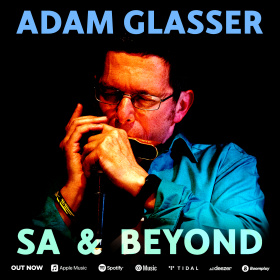


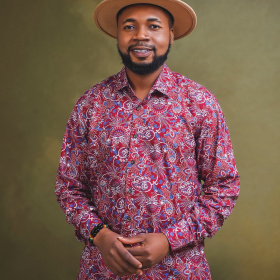

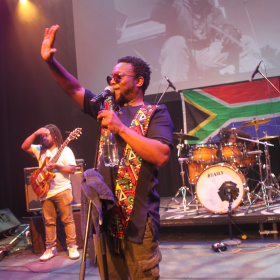

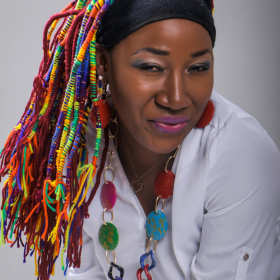






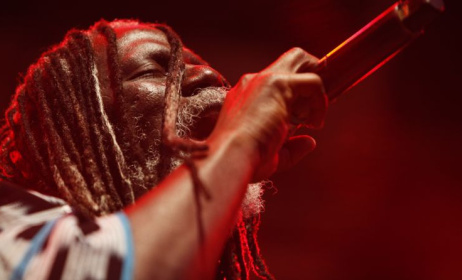





Comments
Log in or register to post comments